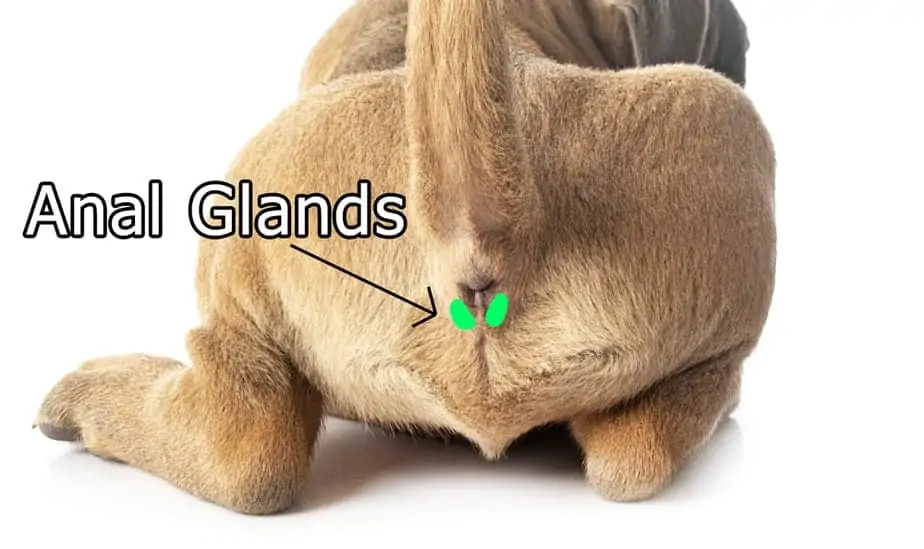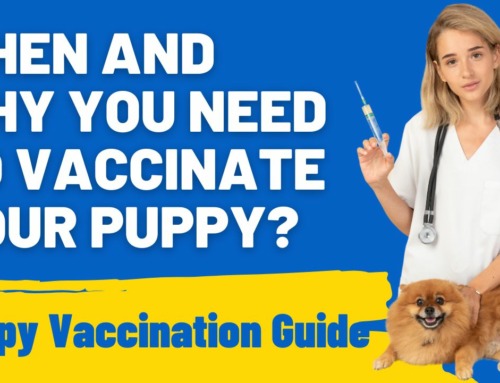Is there something wrong around your dog’s anus? Many people wonder if dogs can get hemorrhoids, sometimes called piles. While your dog cannot get hemorrhoids, they can develop other issues around their anus such as anal gland issues, prolapsed rectum, or anal tumors. Some of these issues can easily be treated at home or with your vet’s help. Other issues may require your vet to intervene and even have surgery performed.
Can Dogs Get Hemorrhoids?
No, dogs do not get hemorrhoids. What many people often mistake for hemorrhoids in dogs is actually an anal gland issue. This is often caused by impacted (plugged) anal glands due to inflammation of the ducts. Other causes of mistaken hemorrhoids can be anal gland abscesses or rectal prolapses.
More information on this can be found on PetMD.
If you believe your dog has an issue with their anus, then be sure to read on as we discuss the most likely cause and what you can do about it.
How do you know if a dog has anal gland issues?
Many times, if your dog has any issues with their anal region, you will notice that this area is red and swollen. You may also notice bulging or bleeding from this area.
Some dogs will scoot their bottoms on the floor if their rectum is bothering them. Many people will confuse anal gland issues with hemorrhoids which are very uncommon in dogs.
Your dog may also have a metallic smell coming from them, in which case we also have an article on that here.
What are anal glands?
Your dog has two glands located on each side of their rectum. These glands secrete an oily smelly substance to help lubricate fecal material as it passes out the rectum. These glands also leave behind a scent that is specific to your dog.
In small and overweight dogs these glands can become impacted and not express when your dog poops. This can cause many of the anal gland issues that are seen by most veterinarians.

Dog anal gland issues signs and symptoms
Common signs that are seen in dogs with anal gland issues are:
- Red and Swollen rectum
- Bleeding from rectum
- Licking rectum
How to treat a dog’s anal gland issues
There are many things that you can do at home to help treat your dog’s anal gland issues but sometimes you may need to see your vet. We have a more comprehensive look at this issue in our post, Dog Has a Smelly Bum: Why and What to do
Home remedies and treatments
These are some ways that you can treat mild anal gland issues at home.
- Warm Compress: If your dog’s anal glands are swollen and seem infected, you can apply a warm compress to this area twice a day.
- Topical antibiotic: If there is any discharge from this area you can also apply Neosporin to the rectum twice a day.
- Frequently expressing these glands at home: You can easily learn to express these glands yourself at home. Watch the video below to learn about how to express these glands.
- Give your dog a supplement: There is a product called Glandex that can help your dog’s anal glands express themselves easier.
Treating a dog’s anal gland issues naturally
If your dog has anal gland issues you can add fiber to their diet to help these glands express easier.
You can add things like canned pumpkin or cooked sweet potatoes to your dog’s diet. It’s best to start off with a small spoonful to make sure that they do not cause any GI issues in your dog.
Veterinarian treatment for anal gland issues
If your dog’s anal gland issues do not start to clear up in just a day or two or seem to get worse, it would be best that your dog see your vet.
Your veterinarian will want to express your dog’s anal glands to remove any infection. They also may need to sedate your dog and open the abscess from the anal gland to let the infection drain out of the anal gland.
Your vet will usually prescribe antibiotics and pain medication to help your dog’s anal glands fully heal. Many vets will want to recheck your dog after 5 to 7 days to make sure that they are healing properly.
Can you put Preparation H on your dog’s bum?
Yes, if your dog’s rectum is very inflamed, you can use over-the-counter creams such as Preparation H or diaper rash cream to help treat the redness and inflammation.
It’s best to apply a small amount and try to fully rub this cream in. Also, try to prevent your dog from licking their rectum after applying the cream. It’s not good if they ingest the cream.
If your dog wants to lick this area, it would be best for them to wear a cone collar to prevent them from licking.
Can I put Vaseline on my dog’s bum?
Vaseline can be safely put on your dog’s rectum but may not help much for anal issues. Using topical antibacterial creams such as Neosporin will help much more. These creams can be applied in small amounts twice a day. Always try to prevent your dog from licking this cream off their bottom.
Do you want to read our post, Why Do Dogs Like Vaseline? Answered!
How long does it take for dog anal issues to heal?
Most anal gland issues take about 2 weeks to fully heal. Your vet may need to express your dog’s anal glands to get all the infection out of these glands. They may also pack these glands with antibiotic ointment to help treat this infection.
These anal glands will be very painful and swollen for 3 to 5 days while the medications that your vet has prescribed are treating the infection.
Many dogs will need to have their anal glands expressed more frequently at first since the glands are very inflamed. Your dog may not be able to express their anal gland themselves for the first few weeks while they are healing.
Can dogs die from anal issues?
Dog anal issues are not usually life-threatening. There are some other issues that can be confused with anal issues such as rectal masses, bloody stool, and prolapses that can be life-threatening if not treated correctly.
If your dog is ever lethargic, not eating or drinking, or if they are pooping blood, they need to see a vet right away.
Dog is bleeding from bottom, what to do?
If your dog is bleeding from their bottom, it’s best to see your vet.
There are many issues that can cause bleeding from the bottom such as:
- Anal gland abscesses: If your dog develops an infection in their anal gland it can abscess and rupture. These abscesses can be very painful for your dog. Your vet will be able to give you antibiotics and anti-inflammatory medications to help treat this infection.
- Rectal masses: These are growths in the inside of the colon that will bleed some when your dog is pooping. Many times, these masses need to be surgically removed. They can also cause an obstruction of your dog’s colon and cause your dog to have issues pooping.
- Rectal Prolapse: If your dog becomes constipated, they can develop a rectal prolapse. This can be caused when your dog is straining to poop. This can also cause your dog’s bottom to bleed.
- Bloody Diarrhea: Some dogs will eat things that they should not have that can cause an upset stomach, such as bloody diarrhea. If your dog is having bloody diarrhea, it would be best that they see the vet. Many times, these dogs need IV fluids and medications to treat their stomach issues.
Many of these issues may need surgery to correct, while others a dog can just take medications.
Final Thoughts
If you ever notice that there is an issue with your dog’s rectum, you may think that this is hemorrhoids. Since dogs usually do not have hemorrhoid issues, they usually have issues with their anal glands. Using some of these tips and tricks will help your dog’s anal glands be able to express more naturally.
Also, if you notice any infection, discharge or bleeding from the rectum, it would be best to see your vet. They may need antibiotics to help clear these infections.
By being proactive about your dog’s anal glands and having them checked very frequently will help prevent many of your dog’s anal gland issues.




